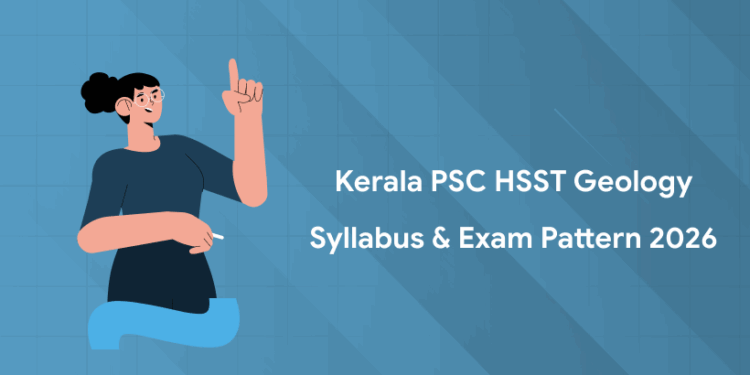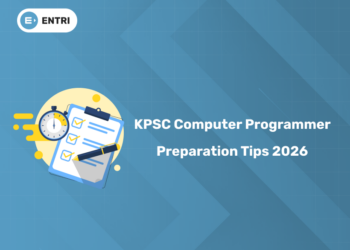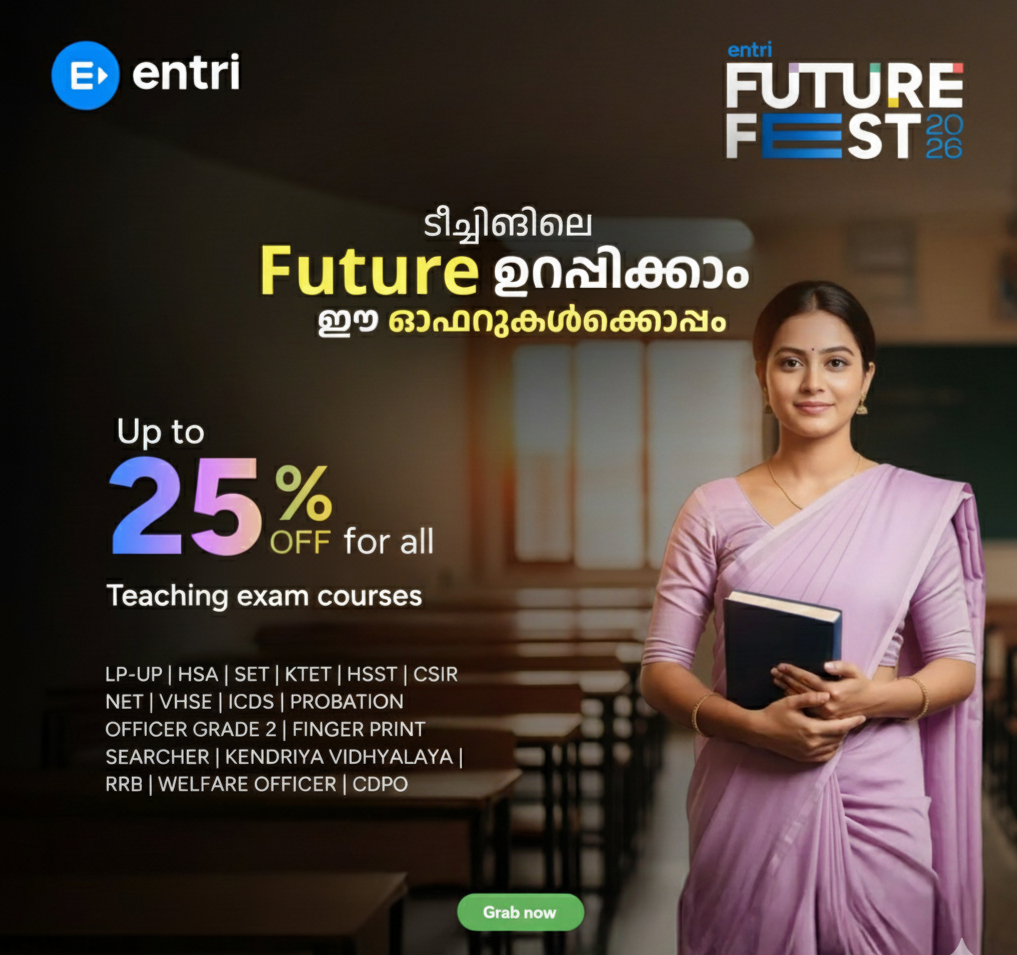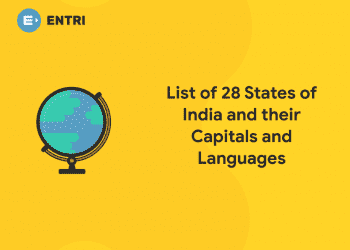Table of Contents
Kerala PSC has released the notification for Higher Secondary School Teacher (Geology) 2026 with the latest syllabus and exam pattern. The exam will have 100 MCQs, each carrying 1 mark, totaling 100 marks. With exams expected soon, start preparing now. This article provides the complete syllabus, exam details, and tips to help aspirants succeed.
Kerala PSC HSST Geology Recruitment 2026 Highlights
| Kerala PSC HSST Geology Notification 2026 | |
| Job Type | Government Job |
| Post Name | Higher Secondary School Teacher |
| Category Number | 444/2025 |
| Subject | Geology |
| Notification Release Date | November 28, 2025 |
| Application Starts | November 28, 2025 |
| Apply Mode | Online |
| Last Date to Apply | December 31, 2025 |
| Official Website | www.keralapsc.gov.in |
Kerala PSC HSST Geology Syllabus 2025 PDF Download
1: The first recipient of the ‘Rajiv Gandhi Khel Ratna’ award?
Kerala PSC HSST Geology 2025 syllabus PDF is available for download below. The exam will be conducted in Malayalam, with a duration of 1 hour 30 minutes. It will consist of 100 multiple-choice questions (MCQs), each carrying 1 mark, for a total of 100 marks. Download the PDF to start your preparation with the latest syllabus and exam details.
Enroll in Kerala's Top-rated HSA Coaching Program!
സർക്കാർ ജോലി എന്ന സ്വപ്നം ഇനി സ്വപ്നം മാത്രമല്ല! Join Entri's HSA Coaching Program
Join Now!Kerala PSC HSST Geology 2026 PYQs
| Paper | Question Paper |
| 736/2021 | |
| 565/2017 | |
| 336/2017 |
Kerala PSC HSST Geology Exam Pattern 2026
The Kerala PSC HSST Geology exam is for 100 marks and consists of 100 questions divided into 4 parts. All questions are multiple-choice (MCQs), with 1 mark awarded for each correct answer. For every wrong answer, 0.33 marks are deducted as negative marking. The exam is conducted in Malayalam and may be held either statewide or district-wise.
| Part | Module(s) | Topics Covered | Marks |
|---|---|---|---|
| Part I | Module I | Historical development, fundamental concepts, and scope of Geomorphology Recent developments in Geology & Modern trends in Geography. | 70 Marks |
| Part II | Teaching Aptitude, Research Aptitude | Teaching methods, learner characteristics, research process, ethics, thesis writing, etc. | 10 Marks |
| Part III | Indian Constitution, Social Welfare Legislations & Programmes | Constitutional framework, rights, duties, emergency provisions, social welfare acts and programmes | 10 Marks |
| Part IV | Renaissance in Kerala, General Knowledge & Current Affairs | Kerala renaissance movements, reformers, press, literature, women’s role, and current affairs | 10 Marks |
| Total | — | — | 100 Marks |
Kerala PSC HSST Geology Detailed Syllabus 2026
The Kerala PSC HSST Geology 2026 syllabus is divided into 4 main parts covering all essential topics. It includes Core Subject, Teaching Aptitude, Indian Constitution, and Current Affairs.
PART I
Historical development, fundamental concepts, and scope of Geomorphology.
Different models of evolution of landscape. Geomorphic agents and processes. Fluvial Geomorphology. Morphometric analysis: elements and parameters. Coastal Geomorphology and hill slope processes. Geomorphology of Kerala. Role of Geologists in environmental studies. Man & Environment – Natural and anthropogenic environmental hazards/disasters and their management. Changing concepts of waste and their disposal. Atmospheric, terrestrial, and marine pollution. Weathering – Type, processes, and products. Factors of soil formation – Soil profile.
Concept of symmetry in crystals. Important crystal systems in crystallography. Principles of X-ray crystallography. Definition of mineral, megascopic identification of minerals. Isomorphism and polymorphism. Important optical properties under open and crossed nicols – refractive index, birefringence, interference colours, dichroism, and pleochroism. Uniaxial and biaxial minerals, and indicatrices. Conoscopic study of minerals, interference figures, optic sign, and optic axial angle. Determination of pleochroic scheme. Geochemical distribution of elements – Geochemical cycle and classification. Principles and methods of isotope dating. Application of thermodynamics in Geochemistry.
Formation and evolution of magma – Bowen’s Reaction Principle and Series. Phase Diagrams: Binary and Ternary Systems. Classification of igneous rocks – textures and structures. Petrography and petrogenesis of Kimberlites, Carbonatites, Anorthosites, Basalts, Alkaline Rocks, and Granites. Structures and textures of sedimentary rocks – classification of sedimentary rocks. Sandstones and limestones – Provenance studies. Statistical analysis of grain size parameters and their geological significance. Factors, concepts, and kinetics of metamorphism – metamorphic grades, zones, and facies. Genetic significance of textures and structures of metamorphic rocks – Mineral parageneses – ACF & AKF diagrams. Petrography and petrogenesis of charnockites, gneisses, migmatites, eclogites, schists, and amphibolites.
Rock deformation: concept of stress and strain. Principles of geological mapping and map reading. Classification of folds and their recognition in the field. Faults: terminology and classification. Foliation and Lineation. Petrofabric analysis. Plate Tectonics, Continental drift, Polar wandering, and Sea Floor Spreading. Historical development and principles of stratigraphy. Code of Stratigraphic Nomenclature and Modern stratigraphic classification. Major geological events during different periods of Earth’s history. Important Pre-Cambrian formations of India with special reference to Karnataka and Kerala. Cuddapah and Vindhyan Supergroup. Cretaceous rocks of Trichinopoly – Deccan Traps. Fossils and fossilization. Origin and evolution of life. Trends in the evolution of Brachiopoda, Cephalopoda, Trilobita, and Graptozoa. Pre-Cambrian stromatolites – classification and morphology. Morphology and evolution of Fishes, Amphibians, Reptiles, and Mammals. Micropalaeontology: Techniques in collection, separation, and preparation. Palaeoecology and stratigraphic significance of Foraminifera and Ostracoda. Palynology: classification and applications. Stratigraphy of Kerala.
Classification of Mineral deposits. Controls of ore localization. Metallogenic Epochs and Provinces. Ore deposits associated with mafic and ultramafic complexes. Stratabound and stratiform ore deposits. Petroleum Geology: origin, migration, and accumulation of petroleum and natural gas. Petroliferous basins of India. Coal Geology: classification, petrography, and distribution in India.
Methods/Guides to Mineral prospecting; exploratory workings; pitting, trenching, and drilling. Sampling methods. Ore reserve estimation. Various methods of geophysical exploration. Geochemical, geobotanical, and radiometric methods. Mining terminology, Alluvial, Opencast, underground, coal, and deep-sea mining methods. Fundamentals of ore dressing.
Hydrogeological properties and classification of rocks. Types of aquifers. Movement of groundwater. Darcy’s law and aquifer parameters. Groundwater prospecting. Geophysical methods. Use of Remote Sensing for groundwater exploration. Well hydraulics: aquifer test and pumping test. Sea water intrusion and Ghyben-Herzberg principle. Quality of groundwater – Physical and chemical properties. Graphical representation of groundwater quality data. Rainwater harvesting and other methods of groundwater recharge and conservation.
Types of remote sensing. Principles of aerial and satellite remote sensing. Elements of aerial photo interpretation. Application of remote sensing data in geomorphology, environmental studies, land use, land cover studies; mineral and groundwater exploration. Microwave remote sensing.
Geographic Information System – Fundamental concepts and components. Applications in Geology.
Recent developments in Geology.
Modern trends in Geography.
PART II
RESEARCH METHODOLOGY / TEACHING APTITUDE
I. TEACHING APTITUDE (5 Marks)
- Teaching: Nature, objectives, characteristics and basic requirements.
- Learner’s characteristics.
- Factors affecting teaching.
- Methods of teaching.
- Teaching aids.
- Evaluation systems.
II. RESEARCH APTITUDE (5 Marks)
- Research: Meaning, characteristics and types.
- Steps of research.
- Methods of research.
- Research ethics.
- Paper, article, workshop, seminar, conference and symposium.
- Thesis writing: its characteristics and format.
PART III
Salient Features of Indian Constitution (5 Marks)
Salient features of the Constitution – Preamble – Its significance and its place in the interpretation of the Constitution.
Fundamental Rights – Directive Principles of State Policy – Relation between Fundamental Rights and Directive Principles – Fundamental Duties.
Executive – Legislature – Judiciary – Both at Union and State Level – Other Constitutional Authorities.
Centre-State Relations – Legislative, Administrative and Financial.
Services under the Union and the States.
Emergency Provisions.
Amendment Provisions of the Constitution.
Social Welfare Legislations and Programmes (5 Marks)
Social Service Legislations like Right to Information Act, Prevention of Atrocities against Women & Children, Food Security Act, Environmental Acts etc. and Social Welfare Programmes like Employment Guarantee Programme, Organ and Blood Donation etc.
PART IV
RENAISSANCE IN KERALA (5 Marks)
TOWARDS A NEW SOCIETY
Introduction to English education – Various missionary organisations and their functioning – Founding of educational institutions, factories, printing press etc.
EFFORTS TO REFORM THE SOCIETY
(A) Socio-Religious Reform Movements
SNDP Yogam, Nair Service Society, Yogakshema Sabha, Sadhu Jana Paripalana Sangham, Vaala Samudaya Parishkarani Sabha, Samathwa Samajam, Islam Dharma Paripalana Sangham, Prathyaksha Raksha Daiva Sabha, Sahodara Prasthanam etc.
(B) Struggles and Social Revolts
Upper cloth revolts, Channar agitation, Vaikom Sathyagraha, Guruvayoor Sathyagraha, Paliyam Sathyagraha, Kuttamkulam Sathyagraha, Temple Entry Proclamation, Temple Entry Act, Malayalee Memorial, Ezhava Memorial etc.
Malabar riots, Civil Disobedience Movement, Abstention Movement etc.
ROLE OF PRESS IN RENAISSANCE
Malayalee, Swadeshabhimani, Vivekodayam, Mithavadi, Swaraj, Malayala Manorama, Bhashaposhini, Mathrubhoomi, Kerala Kaumudi, Samadarsi, Kesari, Al-Ameen, Prabhatham, Yukthivadi etc.
AWAKENING THROUGH LITERATURE
Novel, Drama, Poetry, Purogamana Sahithya Prasthanam, Nataka Prasthanam, Library Movement etc.
WOMEN AND SOCIAL CHANGE
Parvathi Nenmenimangalam, Arya Pallam, A. V. Kuttimalu Amma, Lalitha Prabhu, Akkamma Cheriyan, Anna Chandi, Lalithambika Antharjanam and others.
LEADERS OF RENAISSANCE
Thycaud Ayya Vaikundar, Sree Narayana Guru, Ayyan Kali, Chattampi Swamikal, Brahmananda Sivayogi, Vagbhadananda, Poikayil Yohannan (Kumara Guru), Dr. Palpu, Palakkunnath Abraham Malpan, Mampuram Thangal, Sahodaran Ayyappan, Pandit K. P. Karuppan, Pampadi John Joseph, Mannathu Padmanabhan, V. T. Bhattathirippad, Vakkom Abdul Khadar Maulavi, Makthi Thangal, Blessed Elias Kuriakose Chavara, Barrister G. P. Pillai, T. K. Madhavan, Moorkoth Kumaran, C. Krishnan, K. P. Kesava Menon, Dr. Ayyathan Gopalan, C. V. Kunjuraman, Kuroor Neelakantan Namboothiripad, Velukkutty Arayan, K. P. Vellon, P. K. Chathan Master, K. Kelappan, P. Krishna Pillai, A. K. Gopalan, T. R. Krishnaswami Iyer, C. Kesavan, Swami Ananda Theerthan, M. C. Joseph, Kuttippuzha Krishnapillai and others.
LITERARY FIGURES
Kodungallur Kunhikkuttan Thampuran, Kerala Varma Valiyakoyi Thampuran, Kandathil Varghese Mappila, Kumaran Asan, Vallathol Narayana Menon, Ulloor S. Parameswara Iyer, G. Sankara Kurup, Changampuzha Krishna Pillai, Chandu Menon, Vaikom Muhammad Basheer, Kesav Dev, Thakazhi Sivasankara Pillai, Ponkunnam Varkey, S. K. Pottakkad and others.
GENERAL KNOWLEDGE AND CURRENT AFFAIRS (5 Marks)
General Knowledge and Current Affairs.
Enroll in Kerala's Top-rated HSA Coaching Program!
സർക്കാർ ജോലി എന്ന സ്വപ്നം ഇനി സ്വപ്നം മാത്രമല്ല! Join Entri's HSA Coaching Program
Join Now!How to Download Kerala PSC HSST Geology Syllabus 2026 PDF
To download the Kerala PSC HSST Geology syllabus, visit the Kerala PSC official website. Go to Recruitment > Syllabus > Subject-Based Syllabus, then select HSST Geology. Click on the download link to save the PDF to your device for easy access and preparation.
Kerala PSC HSST Geology Exam 2026 Preparation Tips
- Break the syllabus into 4 parts and focus on one at a time.
- Start with basics like Geomorphology, Mineralogy, and Stratigraphy.
- Make short notes and diagrams for quick revision.
- Practice MCQs and previous year papers.
- Revise regularly and stay consistent.
- Keep updated on recent developments in Geology.












